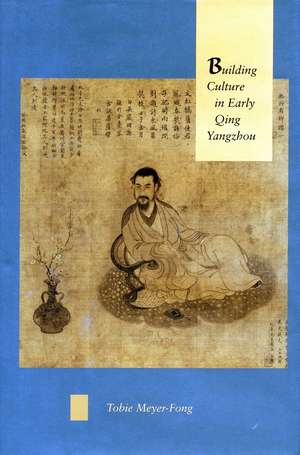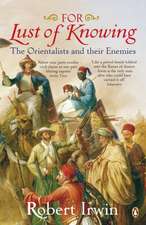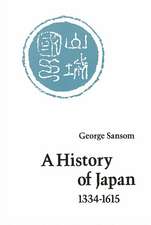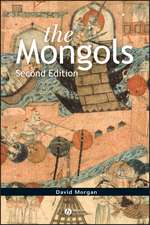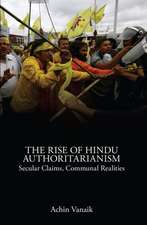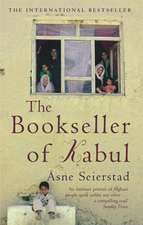Building Culture in Early Qing Yangzhou
Autor Tobie Meyer-Fongen Limba Engleză Hardback – 18 mar 2003
This book explores cultural change in a Chinese city following the Manchu conquest of 1644. The city of Yangzhou, at the intersection of the Grand Canal and the Yangzi river, is best known as the site of human and physical devastation during the conquest and as a vibrant commercial center during the eighteenth century.
The book focuses on the period between the conquest and the city’s commercial florescence—a moment in which Yangzhou was a center of literary culture that was consciously conceived as transregional and transdynastic.
The book shows how Yangzhou’s elite used physical sites as markers in the reconstruction of the city, and as vehicles consolidating power and prestige. Gradually, however, the gestures and sites of the postconquest elite were appropriated by the city’s increasingly powerful salt merchants and incorporated into a court-oriented culture centered at Beijing.
The book focuses on the period between the conquest and the city’s commercial florescence—a moment in which Yangzhou was a center of literary culture that was consciously conceived as transregional and transdynastic.
The book shows how Yangzhou’s elite used physical sites as markers in the reconstruction of the city, and as vehicles consolidating power and prestige. Gradually, however, the gestures and sites of the postconquest elite were appropriated by the city’s increasingly powerful salt merchants and incorporated into a court-oriented culture centered at Beijing.
Preț: 518.86 lei
Nou
Puncte Express: 778
Preț estimativ în valută:
99.30€ • 103.28$ • 81.97£
99.30€ • 103.28$ • 81.97£
Carte tipărită la comandă
Livrare economică 15-29 aprilie
Preluare comenzi: 021 569.72.76
Specificații
ISBN-13: 9780804744850
ISBN-10: 0804744858
Pagini: 304
Dimensiuni: 152 x 229 x 25 mm
Greutate: 0.54 kg
Ediția:1
Editura: Stanford University Press
Colecția Stanford University Press
ISBN-10: 0804744858
Pagini: 304
Dimensiuni: 152 x 229 x 25 mm
Greutate: 0.54 kg
Ediția:1
Editura: Stanford University Press
Colecția Stanford University Press
Recenzii
"Tobie Meyer-Fong's book provides deep insight into the cultural history of Yangzhou during the second half of the seventeenth century, a period less documented and studied than the century of wealth that followed."—The Journal of Asian Studies
Notă biografică
Tobie Meyer-Fong is Assistant Professor of History at Johns Hopkins University.
Textul de pe ultima copertă
“Tobie Meyer-Fong’s book provides deep insight into the cultural history of Yangzhou during the second half of the seventeenth century, a period less documented and studied than the century of wealth that followed.”—The Journal of Asian Studies
